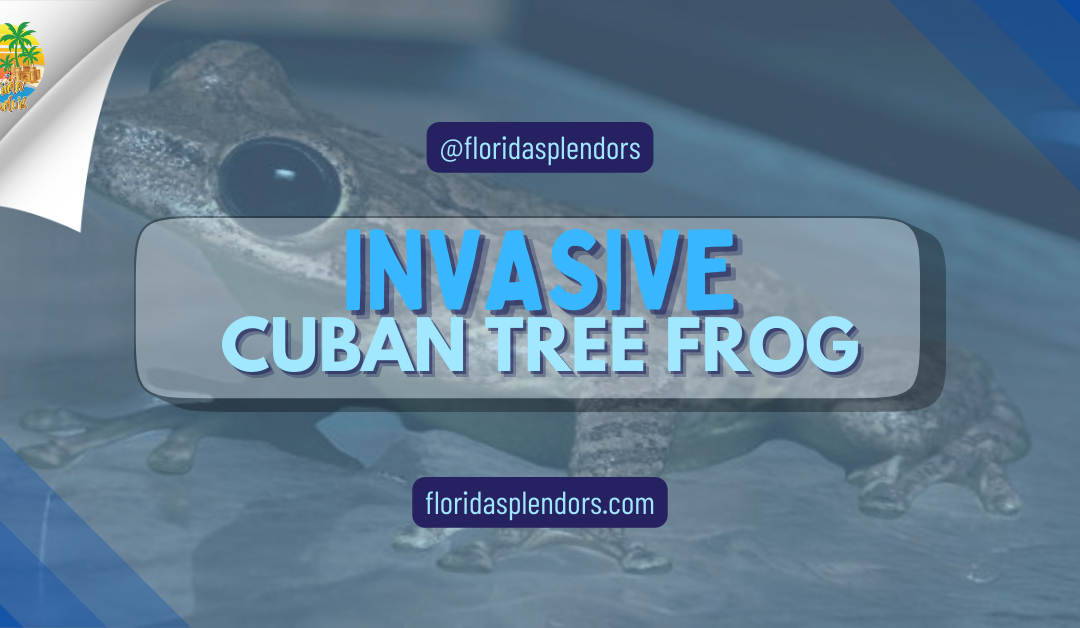==================
Florida Splendors is supported by our audience. When you purchase through one of our links, we may earn a small affiliate commission. As an Amazon Associate I earn from qualifying purchases. Your cost is not affected.
Imagine walking through your garden or a local park, only to find it overrun by an unexpected guest—the Invasive Cuban tree frog. This small but mighty invader is more than just an unusual sight; it’s a species rapidly altering the delicate balance of Florida’s ecosystems. Native to the Caribbean, the Cuban tree frog has entered the Sunshine State, bringing many challenges for native wildlife and local communities.
What makes this frog so invasive? How does it affect our environment, and what can be done to manage its spread? Join us as we dive into the world of the Cuban tree frog, uncovering its journey, impact, and the ongoing battle to protect Florida’s native species. Whether you’re a nature enthusiast, a concerned homeowner, or simply curious about this fascinating amphibian, this is your guide to understanding the invasive Cuban tree frog and its far-reaching effects.
Invasive Cuban Treefrog Problem in Florida: Understanding the Impact and Solutions
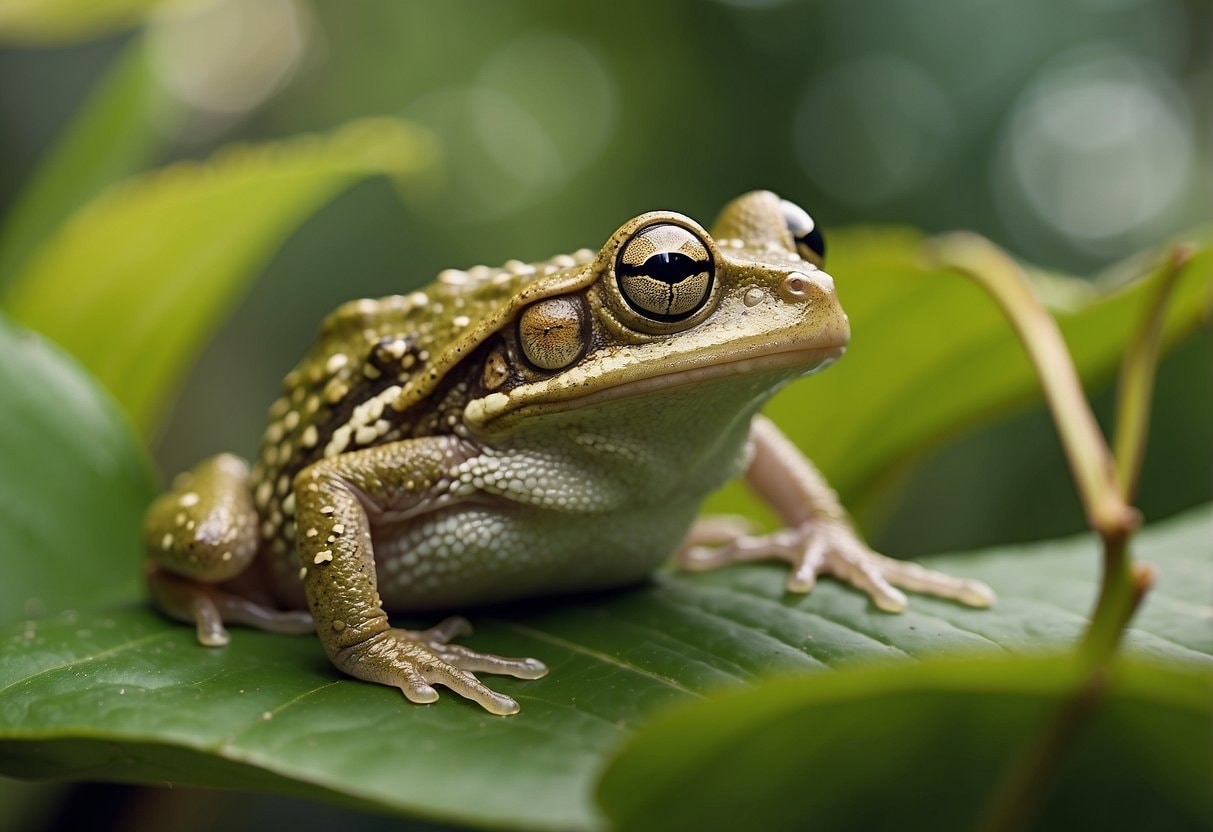
The Cuban tree frog (Osteopilus septentrionalis) has become a significant problem in Florida. Native to Cuba, the Cayman Islands, and the Bahamas, this invasive species first appeared in Florida in the 1920s. These treefrogs, likely sneaking in through cargo shipments, have since spread rapidly and caused harm to native ecosystems.
Their presence leads to competition for resources, which can significantly disturb the natural balance of the environment. Efforts are ongoing to monitor and manage the Cuban tree frog population. Scientists and conservationists are working on various strategies to control their spread and minimize the damage they cause.
Key Takeaways
- The Cuban Treefrog, an invasive species in Florida, has distinct physical and behavioral traits that set it apart from native treefrogs. Native to Cuba, the Bahamas, and the Cayman Islands, it was unintentionally introduced to Florida in the 1920s.
- The presence of the Cuban tree frog in Florida has caused numerous environmental problems, including predation on native species, competition for resources, and disruption of local ecosystems.
- Invasive Cuban tree frogs present significant challenges, from damaging agriculture and infrastructure to creating health issues.
- Managing the invasive Cuban Treefrog problem in Florida effectively requires public education, chemical and biological controls, and physical removal methods. These strategies are essential for reducing the negative impacts on native wildlife and ecosystems.
- Addressing the invasive Cuban Treefrog issue in Florida involves legal measures and collaborative efforts. Research and monitoring are critical, focusing on tracking population dynamics, assessing ecological impact, and developing management strategies to control this species.

Identifying the Cuban Treefrog
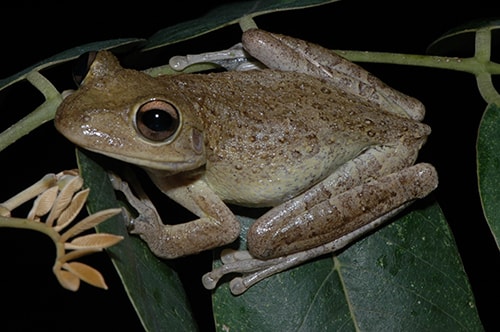
The Cuban tree frog is an invasive species in Florida with unique physical and behavioral traits. It can be recognized by several key characteristics that differentiate it from native treefrogs.
Physical Characteristics
The Cuban Treefrog typically grows larger than native treefrogs, often exceeding 2.5 inches in length. They have bumpy skin and large toepads, which aid in climbing. Their skin is fused to their skull, giving them a distinctive appearance. Young Cuban tree frogs frequently exhibit red eyes and may have a light line running down their sides. These physical traits are crucial for accurate identification.
Native Habitat and Range Expansion
Originally from Cuba, the Bahamas, and the Cayman Islands, the Cuban tree frog was unintentionally introduced to Florida in the 1920s.
They were likely carried over in cargo ships. Since their arrival, they have spread throughout Florida and other southeastern United States. They thrive in urban areas, gardens, and even indoors.

Behavioral Traits
Cuban tree frogs are known for their nocturnal behavior and loud, distinctive calls. They can be seen in a variety of locations, including residential areas. They predate on native treefrog species, insects, and even small vertebrates. Their adaptability to various environments is a key factor in their invasive success.
Invasive Cuban Tree Frog: Environmental Impact in Florida

The presence of Cuban tree frogs in Florida has led to various environmental issues. Key impacts include direct predation on native species, competition for resources, and disruption of local ecosystems.
Predation and Biodiversity Loss
Cuban tree frogs consume a variety of native creatures, including insects, spiders, and smaller frogs. Their predation habits significantly impact the populations of these native species. For example, it’s noted that Cuban Treefrogs regularly eat Florida’s native treefrogs, leading to a decrease in species like the Green Treefrog. This decline reduces biodiversity as native frogs struggle to survive against this invasive predator.
Native predators also suffer as their prey diminishes, disrupting local food chains. Without intervention, affected species may face severe population drops, drastically altering Florida’s natural habitats.
Competition with Native Species
Cuban tree frogs are highly adaptable and compete with native species for shelter, food, and breeding sites. They occupy tree holes, leaves, and man-made structures, often displacing native frogs and other amphibians.
This competition limits resources available to native species, putting additional stress on their populations. Moreover, Cuban tree frogs breed large numbers, outcompeting native species for breeding sites such as ponds and ditches. Native amphibians face difficulty reproducing under these conditions, which can lead to a further decline in their populations.
Ecosystem Imbalance
Introducing Cuban tree frogs has caused notable imbalances in Florida’s ecosystems. By preying on native species and competing for resources, these invasive frogs disturb the natural order of local habitats.
Their presence has been linked to lower populations of native amphibians and insects, affecting the entire food web. The Cuban tree frog’s impact extends to aquatic environments where they lay eggs.
High numbers of tadpoles can deplete resources such as algae and small aquatic organisms. This disturbance can lead to broader ecological consequences, disrupting the balance that native species maintain.
Here’s an additional video about the invasive Cuban tree frog.
By: Wildlife Chronicles
Invasive Cuban Tree Frog: Economic and Human Health Concerns
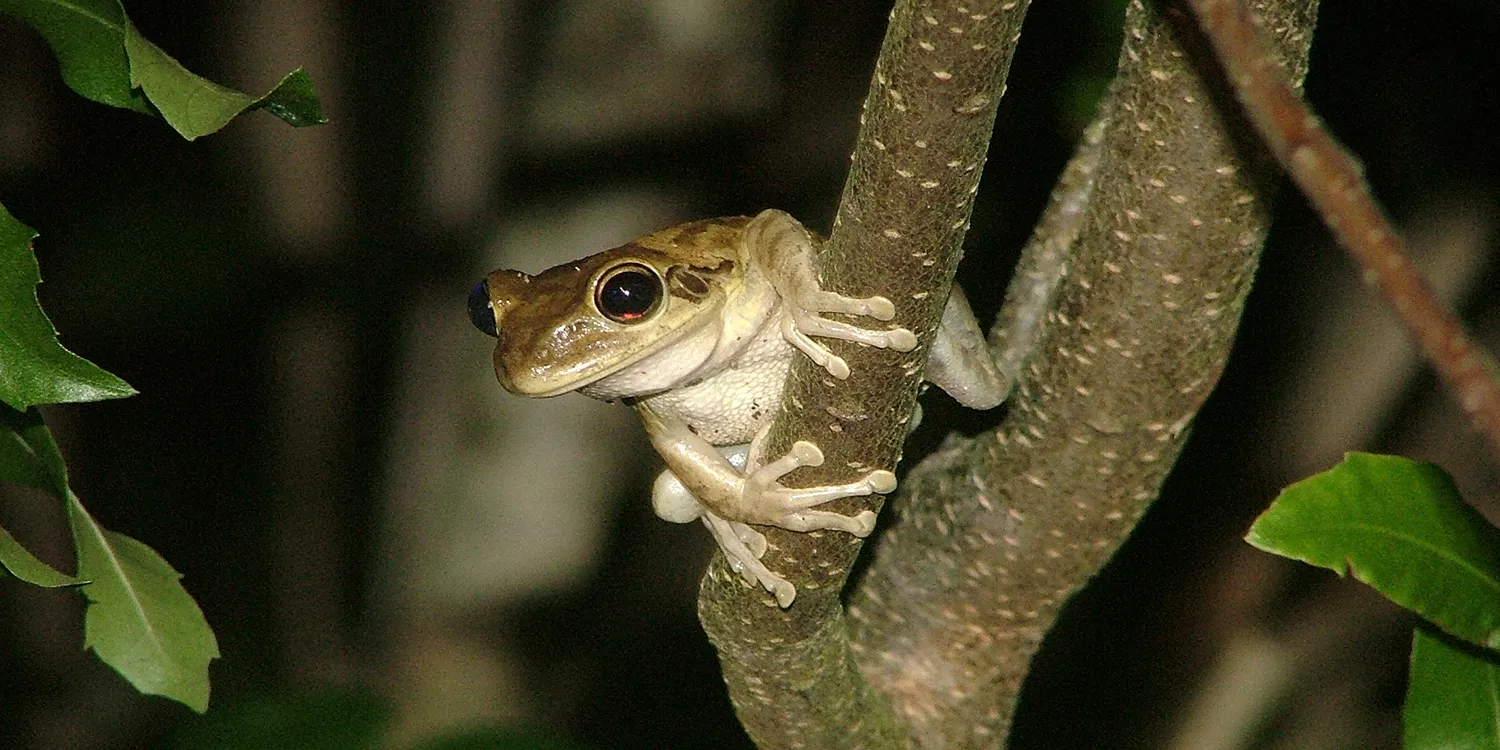
Invasive Cuban tree frogs pose significant challenges, from harming agriculture to damaging infrastructure and creating health problems. Their presence in Florida has led to notable economic impacts and concerns for residents’ well-being.
Agricultural Damage
Cuban tree frogs have been known to disrupt various agricultural practices. These frogs can cause significant damage to crops by feeding on small insects and other pests that benefit plant health.
Additionally, they may interfere with pollination by preying on pollinators, thus reducing crop yield and quality. These frogs are often found in greenhouses and nurseries, where they can create further problems.
Their presence can lead to increased costs for pest control and maintenance. Farms and nurseries might also face quarantine measures to prevent the spread of these invasive frogs to other areas.
Infrastructure Interference
Cuban tree frogs often find their way into urban areas, causing various problems. They invade electrical equipment, like utility boxes and transformers, where their attraction to warmth and moisture can lead to short circuits and power outages.
This disrupts services and results in costly repairs and maintenance for utility companies. Their habit of seeking shelter in homes and buildings can cause additional stress and expense for homeowners.
The frogs can clog plumbing systems by entering through pipes and vents, leading to water damage and repair costs. Furthermore, their loud, nightly calls can be a nuisance, disturbing residents’ peace.
Health Risks and Nuisance
Cuban tree frogs pose some health risks to humans. Their skin secretes a substance that can cause allergic reactions in some people, including itching, sneezing, and watery eyes. Handling these frogs without proper care can lead to skin irritation or rashes.
They are also known to carry parasites, which can potentially infect other animals and humans. Their presence in residential areas can lead to increased stress and discomfort for inhabitants. Besides health risks, the frogs’ loud vocalizations, especially at night, can disrupt sleep and reduce the quality of life for many residents.
Did You Know?
Scientists can identify invasion hotspots and focus control efforts by gathering data on their presence in different habitats.
Control and Management Strategies
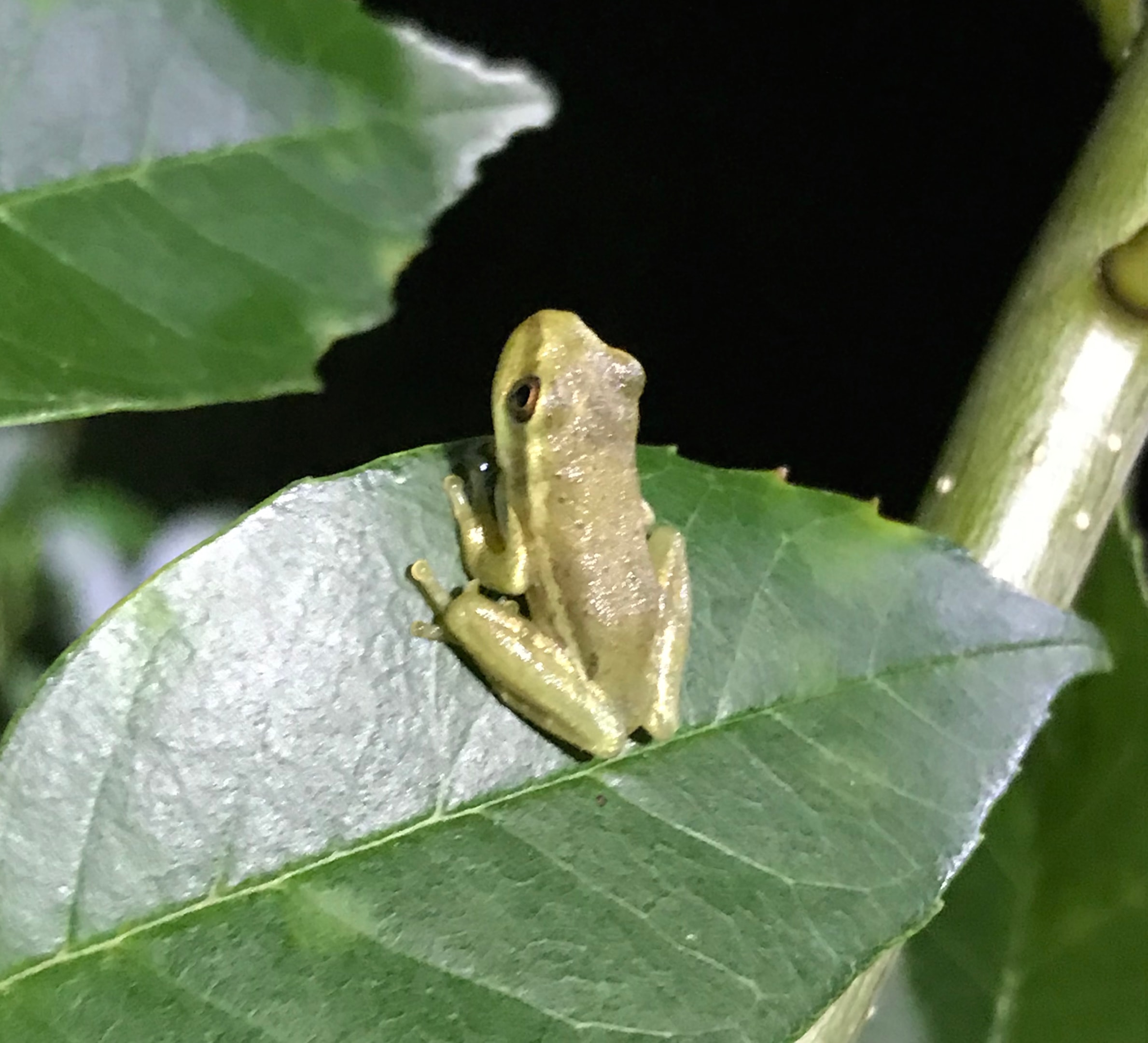
Effectively managing the invasive Cuban Treefrog problem in Florida involves public education, the use of chemical and biological controls, and physical removal methods. Each of these strategies plays a crucial role in mitigating the negative impacts of this species on native wildlife and ecosystems.
Public Awareness and Education
Educating the public is key to controlling the spread of Cuban tree frogs. Residents should learn to identify these invasive frogs, which typically have bumpy skin and range in color from green to gray or even white.
Workshops, flyers, and social media campaigns can inform people about the ecological issues caused by these frogs, such as preying on native species like the green tree frog. Residents can also be taught the importance of not transporting plants or outdoor items that might harbor these frogs to other areas.
Schools and community groups can get involved by adopting monitoring programs. Engaging the community makes the problem a collective issue, making control efforts more effective.
Chemical and Biological Control
Using chemical and biological methods can help manage Cuban tree frog populations. Pyrethroid sprays, commonly used as insecticides, can effectively kill these frogs when applied correctly. Care must be taken to avoid harming native species.
Research into biological controls, such as introducing natural predators, is ongoing. However, this approach must be pursued cautiously to prevent unintended ecological consequences.
Employing these methods requires precision and adherence to regulations to minimize environmental impact. Consulting local wildlife experts for advice on safe and effective use is recommended.
Physical Removal and Exclusion
Physically removing Cuban tree frogs can significantly reduce their numbers. Homeowners can capture and humanely euthanize these frogs according to local guidelines. Regular inspections of gardens, sheds, and other outdoor areas are recommended.
Building barriers and sealing entry points can prevent these frogs from entering homes and gardens. Removing standing water, where frogs lay eggs, can also limit their reproduction. For larger-scale infestations, professional pest control services may be necessary. These experts can employ a combination of methods to tackle the problem effectively.
Invasive Cuban Tree Frog: Legislation and Conservation Efforts
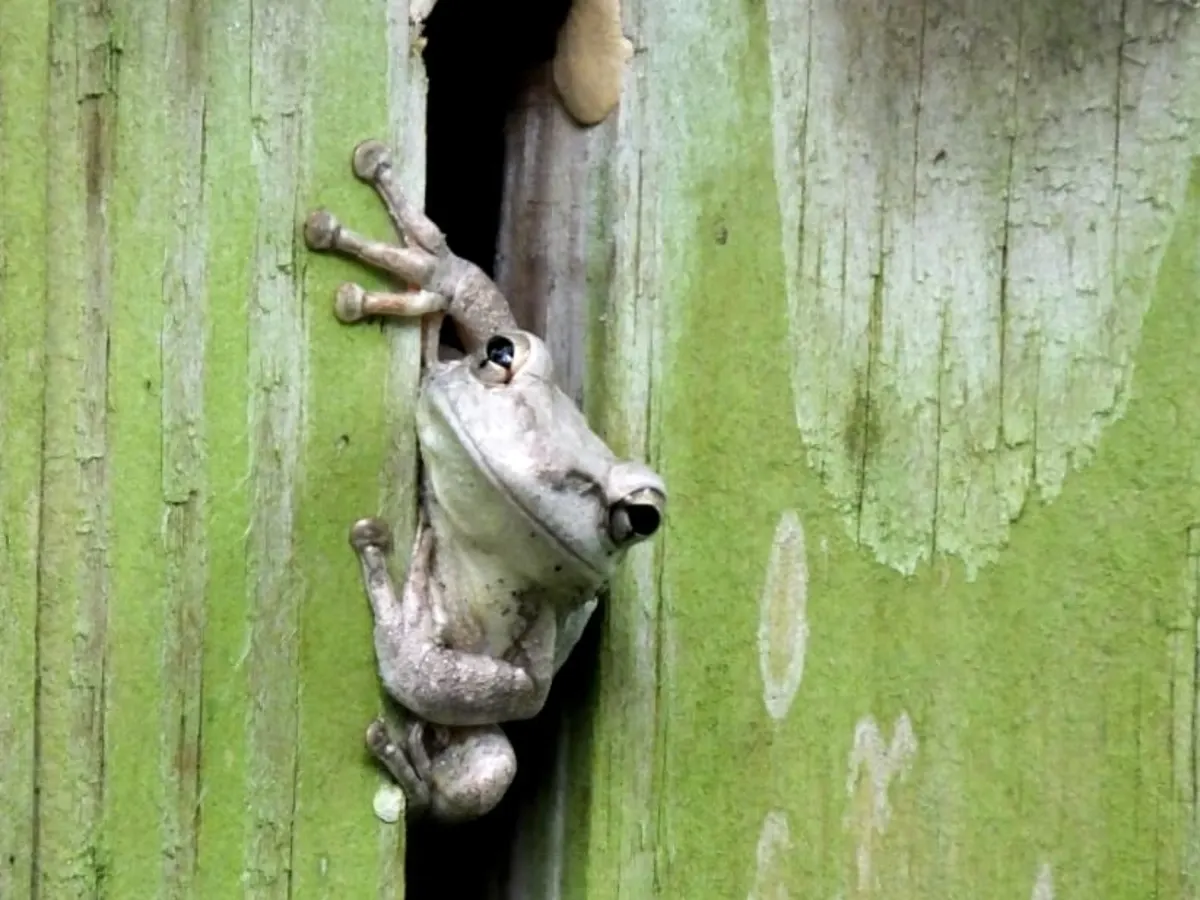
Efforts to address the invasive Cuban Treefrog problem in Florida involve specific legal measures and collaborative initiatives. These actions aim to control the population of this invasive species and protect native wildlife.
Legal Framework
Florida has implemented several regulations to manage the spread of the Cuban tree frog. This law helps prevent further spread into new areas. Educational materials are provided to residents and hobbyists to aid in identification and reporting.
These initiatives are crucial in curbing unintentional releases from pet owners or those involved in horticulture. There are also restrictions on the import and transport of these frogs. Inspections occur at ports of entry, particularly for shipments from regions known to harbor Cuban tree frogs. Violations can result in fines, emphasizing the seriousness of these invasive species regulations.
Collaborative Efforts and Initiatives
Conservation groups and governmental bodies collaborate to address the Cuban Treefrog issue. Local wildlife organizations work with residents to capture and humanely euthanize these frogs. This community involvement is essential in areas where the frog populations are dense.
Research institutions provide vital data on the ecological impact of Cuban tree frogs. Studies focus on how these frogs affect native species and ecosystems, guiding future conservation strategies.
Educational programs in schools and communities raise awareness about the problem of invasive species. Workshops and training sessions teach individuals how to identify and report sightings. These initiatives enhance community engagement and support the broader conservation goals.
Research and Monitoring of Cuban Tree Frogs
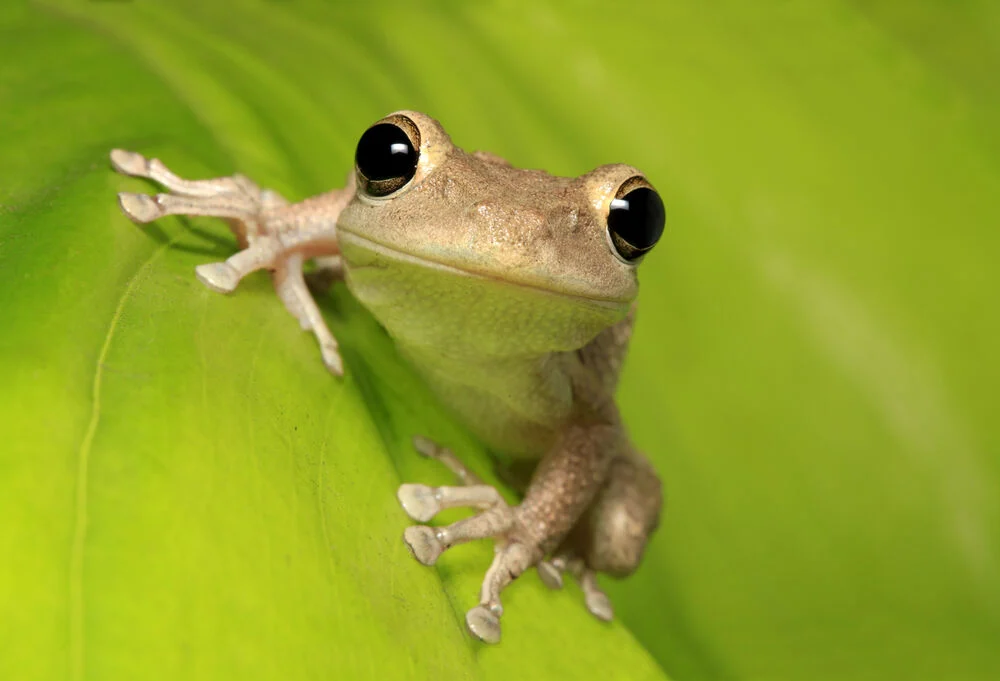
Research and monitoring efforts are crucial in addressing the Cuban Treefrog issue in Florida. These efforts include tracking the population dynamics, assessing the ecological impact, and implementing management strategies to control this invasive species.
Population Studies
Population studies involve tracking the numbers and distribution of Cuban tree frogs. Researchers often use methods like mark-recapture studies to estimate population sizes over time. This helps understand how quickly the frogs spread and which areas are most affected.
Impact Assessment
Impact assessment studies examine how Cuban tree frogs affect native species and ecosystems. These frogs often harm native tree frogs by competing for food and habitat.
They can also prey on smaller animals, disrupting local food chains. Understanding these impacts helps in forming strategies to protect native wildlife.
Monitoring changes in biodiversity and population levels of native species provides a clearer picture of the frog’s ecological footprint.
Adaptive Management
Adaptive management involves using the data from population studies and impact assessments to develop and adjust control measures. Techniques may include habitat modification, removal campaigns, and public education.
For example, USGS Wetland and Aquatic Research Center researchers have focused on removing these frogs from key habitats. By continuously monitoring results and adapting strategies, they aim to reduce the invasive population effectively.
Invasive Cuban Tree Frog: Future Outlook
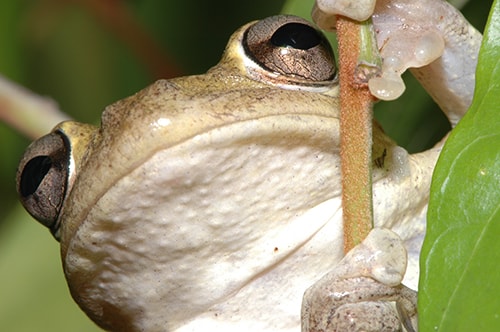
To address the problem of invasive Cuban treefrogs in Florida, future strategies focus on predictive modeling and sustainability and resilience planning. These methods aim to mitigate impacts and prevent further spread.
Predictive Modeling
Predictive modeling uses data to anticipate the spread of Cuban treefrogs. Scientists analyze patterns and create models forecasting where the frogs may expand. These models help in deploying control measures effectively.
By using climate data, habitat suitability, and migration patterns, predictive models can provide valuable insights. This proactive approach allows management teams to prepare and implement strategies before the frogs establish new populations.
Sustainability and Resilience Planning
Sustainability and resilience planning ensure long-term solutions to the treefrog invasion. This involves community education, habitat restoration, and long-term ecological balance. Educating the public about identifying and reporting Cuban treefrogs supports early detection and rapid response efforts.
Restoring native habitats can help strengthen populations of local treefrogs, making ecosystems more resilient to invasion. By focusing on sustainable practices and engaging local communities, Florida can create a resilient environment capable of withstanding the challenges posed by invasive species. This integrated approach ensures the protection of native wildlife and the health of ecosystems.
Here’s an additional video about other invasive species in Florida.
By: Tsuki
Combating the Cuban Tree Frog Invasion: Challenges and Strategies for Florida
The presence of Cuban tree frogs in Florida is more than just an ecological anomaly; it’s a significant environmental challenge. This invasive species, native to the Caribbean, has disrupted the delicate balance of local ecosystems, preying on native wildlife and competing for resources. The impact of these frogs extends beyond nature, affecting agriculture, infrastructure, and even human health.

Efforts to manage and mitigate the spread of Cuban tree frogs are multifaceted, involving public education, scientific research, and legal regulations. By understanding the behavior, identifying the key characteristics, and employing effective control strategies, communities can work together to protect Florida’s native species and habitats.
The battle against the Cuban tree frog is ongoing, requiring constant vigilance, adaptive management, and a collaborative approach. Through continued research, monitoring, and public involvement, there is hope for preserving Florida’s ecosystems’ natural beauty and biodiversity. The Cuban tree frog may be a formidable invader, but its impact can be controlled with concerted effort, ensuring a healthier environment for future generations.
Frequently Asked Questions
What is the Impact of Cuban Tree Frogs on Local Ecosystems and Human Health?
Cuban treefrogs prey on native frogs, insects, and even small lizards, reducing local biodiversity. They can clog plumbing and cause power outages by inhabiting electrical boxes. Their skin secretes a substance that can irritate human eyes and mucus membranes.
What Distinguishes Cuban Tree Frogs From Native Florida Tree Frogs?
Cuban treefrogs are generally larger than native frogs and have distinctive bulging eyes. They have expanded toe pads that aid in climbing. Their skin is often rough and can vary in color, ranging from green to gray or brown, and they have a lighter stripe along their sides.
What Regulations Exist Regarding the Capture and Release of Cuban Tree Frogs in Florida?
In Florida, some regulations allow the capture and humane euthanasia of Cuban tree frogs. Capturing and releasing them elsewhere is discouraged, as it contributes to their spread. State wildlife agencies provide guidelines for proper identification and removal practices.
Discover Florida’s Wonders with Us!
Follow us on social media for the latest in engaging content, product reviews, and a supportive community passionate about Florida. Join us today and connect with fellow enthusiasts who share your love for the Sunshine State!
Stay updated, inspired, and connected. See you there!

